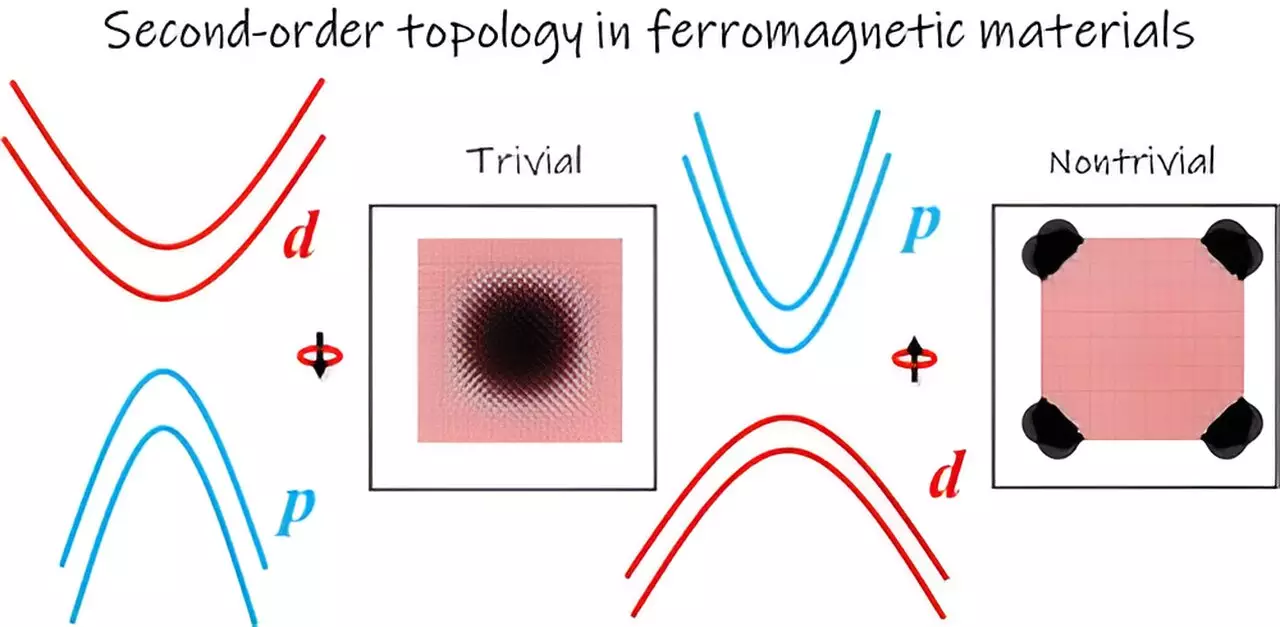As research in material science continues to advance, one of the most promising areas is spintronics, which leverages the electron’s spin properties alongside its charge for enhanced data processing capabilities. Spintronics holds the potential to revolutionize information technology by facilitating faster, more efficient electronic devices. A significant component of this field involves topological insulators—materials that exhibit highly specialized electronic behaviors. Unlike conventional insulators, topological insulators allow electron conduction on their surfaces while remaining insulating in their bulk form. Recent contributions from researchers at Monash University, particularly those anchored in the FLEET Center, have introduced groundbreaking insights into a class of materials known as intrinsic magnetic second-order topological insulators, expanding the horizons of spintronics.
Two-dimensional ferromagnetic semiconductors have emerged prominently in scholarly research, particularly materials such as CrI3, Cr2Ge2Te6, and VI3. These substances exhibit unique electron behaviors that form the basis of spintronic applications. Within the realm of topological insulators, a noticeable distinction arises; for example, three-dimensional variants like Bi2Se3 showcase the presence of two-dimensional Dirac fermions at their surfaces. This leads to the understanding of second-order topological insulators, which diverge from their topological insulator counterparts by displaying (m-2)-dimensional boundary states in an m-dimensional framework. For instance, three-dimensional materials can manifest one-dimensional hinge states or zero-dimensional corner states, indicative of their complex structure and behavior.
One of the core challenges faced in researching intrinsic ferromagnetic semiconductors is their strong electron-electron correlations, which create a state often likened to an atomic insulator that lacks the distinguishing topological properties. These correlations inhibit the effective communication between electrons, rendering bridging the gap between states a significant hurdle. Addressing this quandary, researchers led by Dr. Zhao Liu and Professor Nikhil Medhekar developed an ingenious framework that allows for a deeper understanding of the behaviors of these intricate materials.
A pivotal finding of the Monash University team centers on the emergence of inverted orbital order in specific intrinsic ferromagnetic semiconductors. In traditional frameworks, p orbitals (typically lower in energy) act to facilitate the delivery of super-exchange interactions between adjacent metal cations, which possess open d-shell configurations. However, the discovery that some materials can arrange their p orbitals at higher energy levels than d orbitals introduces a compelling new perspective in material behavior. This transition to an inverted p-d configuration leads to distinctly different topological phases, where inverted orbital interactions yield nontrivial topological characteristics, while normal ordered states are linked to trivial topological phases.
Utilizing advanced density-functional theory calculations and wave function symmetry analysis, the research team has identified promising candidates for intrinsic magnetic second-order topological insulators, such as 1T-VS2 and CrAs monolayers. Notably, 1T-VS2 exhibits a hexagonal lattice structure, whereas CrAs adopts a square lattice pattern. These materials present exciting possibilities not only in terms of theoretical applications but also practical visualizations. For example, spin-polarized scanning tunneling microscopy could effectively map the unique corner-localized states present in these structures, offering a window into their novel electronic properties.
In a broader scope, Professor Medhekar indicates the potential applications of this research extending to Kondo insulators—materials where d and f orbitals behave similarly to p and d orbitals studied in this work. The prospect of identifying second-order topological Kondo insulators presents an exciting frontier for future investigations and innovations in the field of spintronics.
The research conducted by the team at Monash University undeniably contributes to the burgeoning field of spintronics and enhances the understanding of intrinsic magnetic second-order topological insulators. As researchers continue to explore the intricacies of these materials and their properties, we can anticipate significant advancements in the functionality and efficiency of electronic devices. The pursuit of innovative materials within the realm of spintronics promises not only to enrich theoretical frameworks but also to yield practical applications that could transform our approach to information technology in the coming years.


Leave a Reply